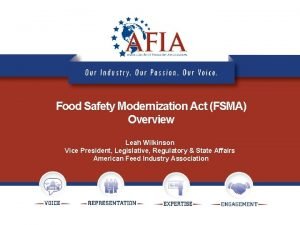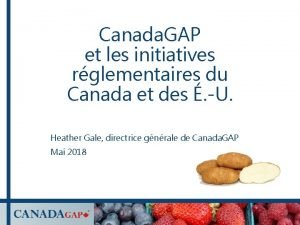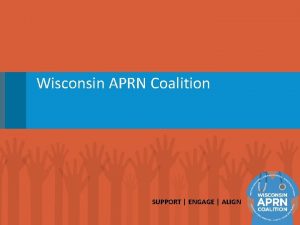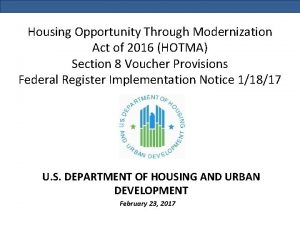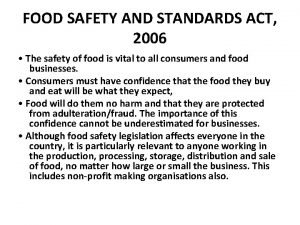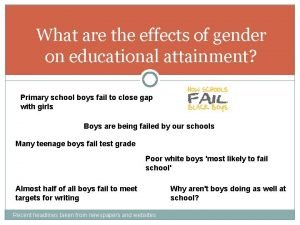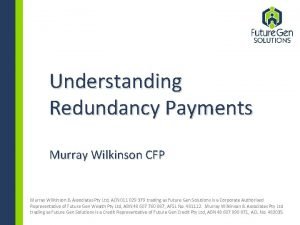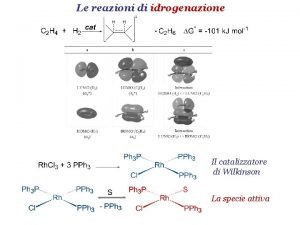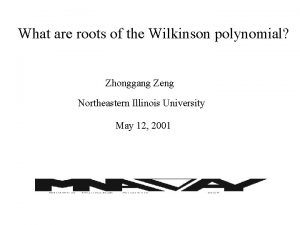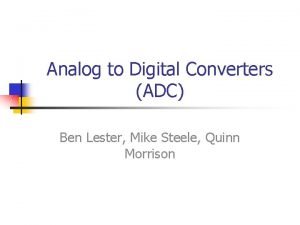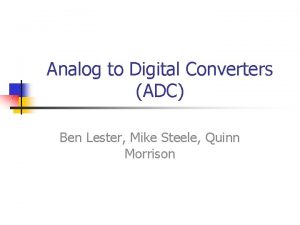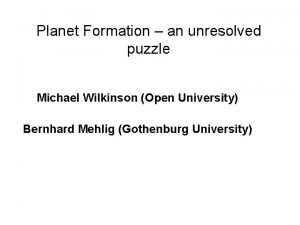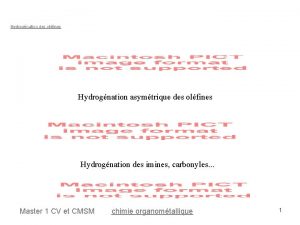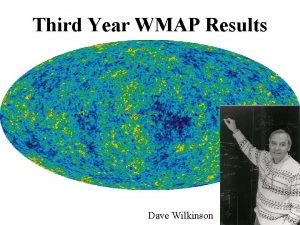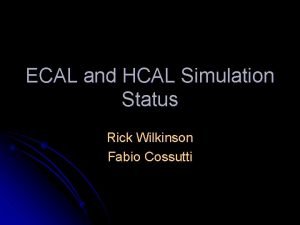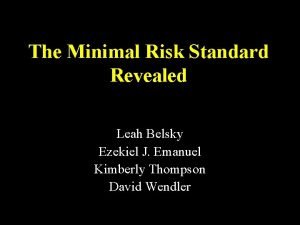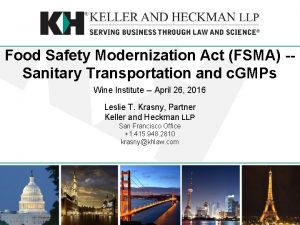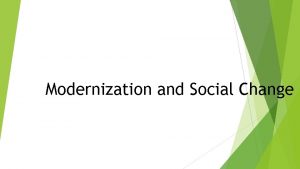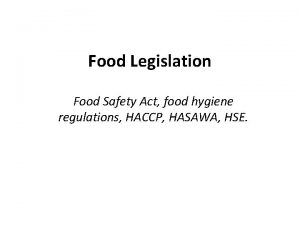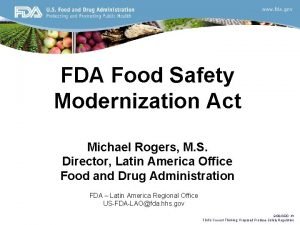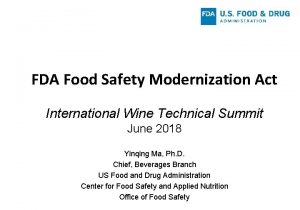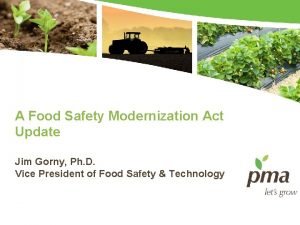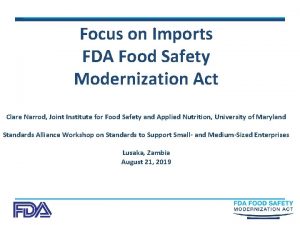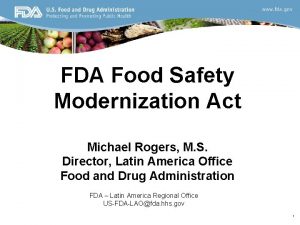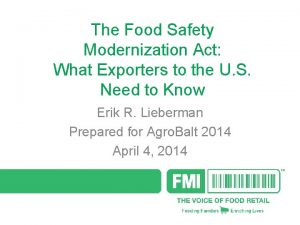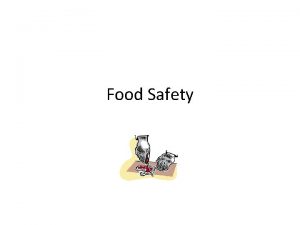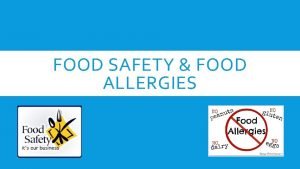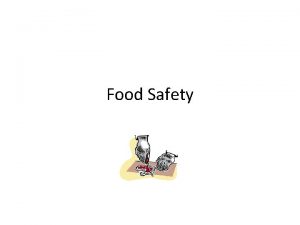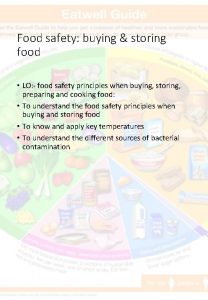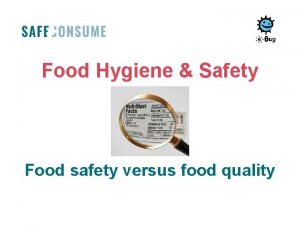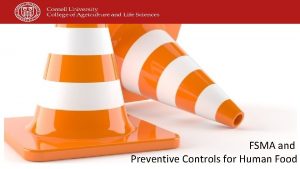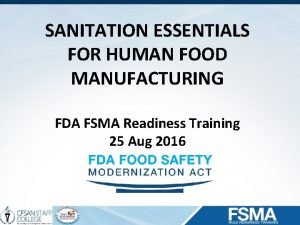Food Safety Modernization Act FSMA Overview Leah Wilkinson





























- Slides: 29

Food Safety Modernization Act (FSMA) Overview Leah Wilkinson Vice President, Legislative, Regulatory & State Affairs American Feed Industry Association

What is FSMA? Food Safety Modernization Act • The most sweeping reform of our food safety laws in more than 70 years • Signed into law by President Obama on January 4, 2011 • It aims to ensure the U. S. food supply is safe by shifting the focus from responding to contamination to preventing it • Covers both human food animal food Page 2

FSMA for Animal Food: Background Part 507 - Current Good Manufacturing Practice, Hazard Analysis, and Risk-Based Preventive Controls for Food for Animals • Originally proposed: October 29, 2013 • Supplemental proposal: September 29, 2014 • Public comments: More than 2, 400 for the original proposal; more than 140 for the supplemental proposal • Final rule: September 17, 2015 Page 3

AFIA and FSMA • AFIA was actively engaged from early on • • Worked with Congress – as they wrote law, now as they fund and oversee implementation Worked with CVM, FDA, OMB and other agencies – before, during and after rule-making stages • Member involvement reviewing rules • 80+ individuals representing 65 AFIA member companies on 2 work groups and 8 subgroups • Education and awareness • More to come… Page 4

Food Safety Modernization Act • Who’s covered? • • Facilities that manufacture, process, pack or hold animals food and required to register with FDA under Bioterrorism Act Exemptions • • • Farms – as defined in § 1. 227 Qualified facilities (very unlikely for animal food) Other specific exemptions § 507. 5 • Animal food means food for animals other than man and includes pet food, animal feed and raw materials and ingredients Page 5

FSMA: Key Areas Addressed • Establish Current Good Manufacturing Practices (CGMPs) • Hazard Analysis and Risk-Based Preventive Controls • Each facility is required to implement a written food safety plan that focuses on preventing hazards in animal foods Page 6

FSMA: CGMP’s Animal Food CGMPs FSMA • Address building, grounds, equipment, personnel, etc. • Mainly observational, and address routine operations • No specific record keeping requirements in the CGMP section of the rule Page 7

CGMPs vs. Prerequisite Programs vs. PC • Not always a clear distinction and can depend on approach and context. Focus on end game • A way to think about the 3 in the FSMA context • CGMPs: observational, routine, facility and staff focused • Prerequisite program: keeps/limits something entering the process • PC: occurs in the process and controls or eliminates hazard Page 8

FDA “Please show me your Animal Food Safety Plan. ” Page 9

Animal Food Safety Plan: Are You Ready? • Tell your story • Walk the FDA inspector through your documents • Don’t dump what you’re doing now - repackage Page 10

Food Safety Plan • • Hazard analysis SOP’s to mitigate risk Preventive controls if necessary Supply-chain program Recall plan Procedures for monitoring Corrective action procedures Verification and validation procedures Page 11

Food Safety Plan – Hazard Analysis • Hazard identification must consider known or reasonably foreseeable biological, chemical, and physical hazards • Evaluation of hazards must include: • consideration of likelihood of occurrence in the product subject to the analysis • Impact of prerequisite programs, formulation, ingredients, equipment, etc. • consideration of severity of illness/injury and probability of occurrence in absence of preventive controls Page 12

Food Safety Plan – Hazard Analysis The hazard evaluation must consider the effect of the following on the safety of the finished animal food for the intended animal: • The formulation of the animal food • The condition, function, and design of the facility and equipment • Raw materials and ingredients • Transportation practices • Manufacturing/processing procedures • Packaging activities and labeling activities Page 13

Food Safety Plan – Hazard Analysis • What is AFIA doing to help? • AFIA’s foundation, the Institute for Feed Education and Research, agreed to fund development of a generic feed mill (and possibly ingredient mill) hazard analysis (HA) with the University of Minnesota’s Center for Animal Health and Food Safety in the College of Veterinary Medicine. • Companies will be able use this generic hazard analysis as a guide to develop their own Page 14

What Mitigates the Risk of Hazards? Current Good Manufacturing Practices (CGMP’s) or other prerequisites ensure that all food, including animal food, is manufactured under conditions and practices that protect against contamination with undesirable biological, chemical, physical, and radiological agents. Preventive Controls means those risk-based, reasonably appropriate procedures, practices, and processes that a person knowledgeable about the safe manufacturing, processing, packing, or holding of food would employ to significantly minimize or prevent the hazards identified under the hazard analysis that are consistent with the current scientific understanding of safe food manufacturing, processing, packing, or holding at the time of the analysis. Page 15

Supply-Chain Program • Manufacturing/processing facilities must have a risk-based supply-chain program to ensure control of hazards in raw materials and other ingredients when the control is applied before receipt (“supply-chain applied control”). Page 16

Supplier Verification Activities • • Onsite audits (default for most serious hazards) Sampling and testing Review of relevant food safety records Other as appropriate Activity and frequency based on nature of hazard, where it is controlled and supplier performance Page 17

Compliance Dates TABLE 32 – 80 FR 56170 at 56329 Business Size CGMP Compliance Date PC Compliance Date Business other than small and very small 1 year – Sept. 19, 2016 2 years – Sept. 18, 2017 Small business (a business (incl. any subsidiaries and affiliates) employing fewer than 500 full-time equivalent employees) 2 years – Sept. 18, 2017 3 years – Sept. 17, 2018 Very small business (a 3 years – Sept. 17, 2018 business averaging less than $2, 500, 000, per year, during the 3 -yr period preceding the applicable calendar year in sales of animal food plus the market value of animal food manufactured, processed, packed, or held without sale (e. g. , held for a fee or supplied to a farm without sale) 4 years – Sept. 17, 2019 Except for retaining records to support its status as a very small business (January 1, 2017) Page 18

Supply-Chain Compliance Dates TABLE 33 – 80 FR 56170 at 56329 Situation Compliance Date A receiving facility is a small business and its supplier will be subject to the CGMPs, but not the preventive control requirements, of the animal food preventive controls rule. 6 months after the receiving facility’s supplier of that raw material or other ingredient is required to comply with the CGMP requirements of this rule. A receiving facility is a small business and its The later of: September 17, 2018 or 6 supplier is subject to the animal food months after the receiving facility’s supplier preventive controls rule. of that raw material or other ingredient is required to comply with this rule. A receiving facility is not a small business or a very small business and its supplier will be subject to CGMPs, but not the preventive control requirements, of the animal food preventive controls rule. 6 months after the receiving facility’s supplier of that raw material or other ingredient is required to comply with the CGMP requirements of this rule. A receiving facility is not a small business or a very small business and its supplier will be subject to the animal food preventive controls rule. The later of: September 18, 2017 or 6 months after the receiving facility’s supplier of that raw material or other ingredient is required to comply with the applicable rule. Page 19

Food Safety Modernization Act • What do you need to do at your facility? • • Create CGMPs; Train staff (qualified individuals) Perform a hazard analysis (IFEEDER/NGFA Foundation contracting on generic hazard analysis by U of MN that facilities can start with) Determine what hazards need controlling Determine if all your hazards can be mitigated by CGMPs, which AFIA believes is true for feed mills Develop your Animal Food Safety Plan Have it reviewed and authorized by your preventive controls qualified individual (PCQI) Create a supply-chain management plan Create and maintain the records under your plan Page 20

Foreign Supplier Verification Program • Requires importers to share responsibility for ensuring safety of imported food • Risk-based • Flexibility in meeting requirements • Alignment with PC supply-chain provisions Page 21

Sanitary Transportation • Final Rule published in Federal Register April 6, 2016 • Covers: • • • Shippers, receivers, loaders and carriers transporting food (including animal food) in the U. S. by motor or rail vehicle Shippers in other countries who ship to U. S. by motor, rail, ship or air and transfer intact container onto motor or rail for consumption in U. S. Transportation of food intended for export until reaches port or U. S. border Page 22

Sanitary Transportation • Establishes requirements: • • Vehicles and transportation equipment – suitable and adequately cleanable Transportation operations – measures to ensure food safety: temperature control, protect from contamination by non-food items in same or previous load Training – required when carrier and shipper agree the carrier is responsible for sanitary conditions Records – depends on type of records, not to exceed 12 months Page 23

Sanitary Transportation • Exemptions: • • • Shippers, receivers or carriers less than $500, 000 in annual revenue Transportation activities performed by a farm (hauling grain) Transportation of human food byproducts for animal food without further processing Transportation of live animals, except molluscan shellfish Transportation of compressed food gases and food contact substances Transportation of food completely enclosed by a container (think sealed/sewn packages, not a closed bulk truck) except if it requires temperature control Page 24

Sanitary Transportation • Compliance dates: • • April 2017 for large or businesses other than small April 2018 for small business (less than 500 employees) and motor carriers less than $27. 5 million in annual receipts • Industry wins: • • No 21 CFR, part 11 (electronic records) requirement Info on one previous load instead of three as originally proposed Page 25

Upcoming Rulemakings • May 31, 2016 – Intentional Adulteration (animal food exempt thus far) • Planned guidance documents: • • Current Good Manufacturing Practices Human Food By-Products for Use as Animal Food Hazard Analysis and Preventive Controls A Small Entity Compliance Guide that explains the actions a small or very small business must take to comply with the rule Page 26

Training Coming Soon! • Later this year, three, 2. 5 hour webinars of the entire animal food rule • After UMN issues Hazard Analysis report, one full day workshop in December and one in January • When FDA releases the framework training for PCQIs, and AFIA has a lead instructor trained, AFIA will hold a series of PCQI trainings across the U. S. in conjunction with universities and others. • Other short videos planned on Qualified Individual training for feed safety/hygiene Page 27

What Should You Do? www. safefeedsafefood. org Page 28

THANK YOU
 Fsma overview
Fsma overview Fsma pcp
Fsma pcp Wisconsin aprn modernization act
Wisconsin aprn modernization act Housing opportunity through modernization act
Housing opportunity through modernization act Financial services modernization act of 1999 definition
Financial services modernization act of 1999 definition Food safety and standards act,2006
Food safety and standards act,2006 Control measures for physical hazards
Control measures for physical hazards Macbeth summary
Macbeth summary Unit 2 food food food
Unit 2 food food food Eltonian pyramid
Eltonian pyramid Wilkinson genderquake sociology
Wilkinson genderquake sociology Murray wilkinson
Murray wilkinson Catalizzatore di wilkinson
Catalizzatore di wilkinson Divisor de potencia wilkinson
Divisor de potencia wilkinson Billy elliot character
Billy elliot character Wilkinson polynomial matlab
Wilkinson polynomial matlab Ben lester
Ben lester Esther wilkinson
Esther wilkinson Daryl wilkinson
Daryl wilkinson Wilkinson adc converter
Wilkinson adc converter Saviour baby
Saviour baby Wilkinson exo
Wilkinson exo Language
Language Hydrognation
Hydrognation Dave wilkinson model
Dave wilkinson model Fabio wilkinson
Fabio wilkinson Dr leah hollon
Dr leah hollon Leah belsky
Leah belsky Devorah leah
Devorah leah Leah yourstone
Leah yourstone
